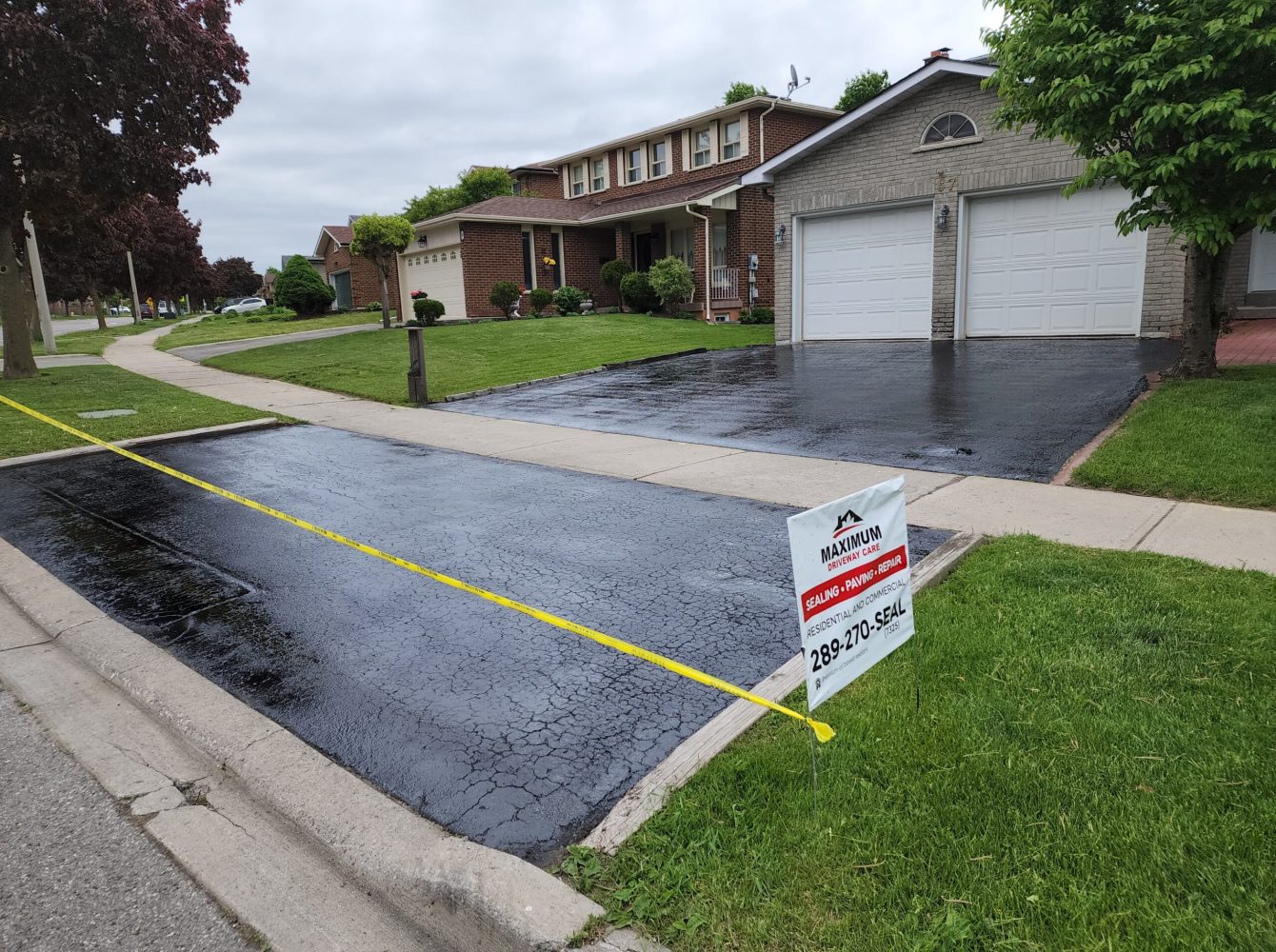Optimize Sturdiness: Warm Mix Asphalt Sealing for Angled Parking Frameworks
Optimize Sturdiness: Warm Mix Asphalt Sealing for Angled Parking Frameworks
Blog Article
Warm Mix Asphalt: A Lasting Remedy for Pavement
Hot Mix Asphalt (HMA) has actually arised as a leading sustainable option for pavement services, offering a myriad of environmental advantages and innovative technologies. As the need for environment-friendly building practices grows, discovering the nuances of HMA's sustainability can supply beneficial understandings right into the future of pavement solutions.
Environmental Advantages of Warm Mix Asphalt

Furthermore, Warm Mix Asphalt assists to alleviate metropolitan heat island effects. Its dark color absorbs sunlight, lowering the quantity of warmth mirrored back right into the ambience compared to lighter-colored pavements. This can decrease ambient temperatures in city locations, lowering the need for cooling and inevitably reducing energy consumption.
On top of that, Warm Mix Asphalt adds to enhanced stormwater administration. Its permeable nature permits water to infiltrate the pavement and reenergize groundwater supplies, reducing drainage and the danger of flooding. These ecological advantages make Hot Mix Asphalt a lasting choice for leading freeways and roadways.
Power Performance in HMA Manufacturing
Is power performance an essential element in the manufacturing of Warm Mix Asphalt (HMA)? Power plays a substantial duty in the production of HMA, affecting both price and ecological sustainability. One vital facet of power effectiveness in HMA production is the use of warm mix asphalt (WMA) innovations.
Moreover, improvements in plant innovations have led to more energy-efficient HMA manufacturing procedures. By maximizing energy usage in HMA production, the industry can lower its carbon footprint while maintaining top quality sidewalk products.
Recyclability of Warm Mix Asphalt
The recyclability of Hot Mix Asphalt (HMA) is a critical facet of its sustainability and long-term ecological effect. HMA is among the most recycled products in the United States, with over 100 million lots of recovered asphalt pavement (RAP) being reused each year in new pavement building and construction. Recycling HMA uses a number of ecological advantages, such as reducing the need for virgin products, lowering energy intake throughout production, and decreasing the amount of waste sent out to garbage dumps.
The process of recycling HMA involves crushing the existing pavement, squashing it right into smaller sized items, and blending it with new aggregate and asphalt binder to develop a recycled mix. This recycled mix can usually perform as well as or perhaps far better than standard HMA, while needing less resources and creating reduced greenhouse gas exhausts. By including RAP right into brand-new pavement projects, roadway agencies can save natural deposits, minimize expenses, and decrease the environmental footprint of road construction and upkeep activities. Generally, the recyclability of HMA plays a substantial duty in advertising sustainable practices within the pavement sector.

Long-Term Efficiency of HMA
Asphalt pavements show durability and resilience over an extensive duration, reflecting the long-lasting performance of Warm Mix Asphalt (HMA) The long life of HMA can be credited to its capability to stand up to rush hour loads, extreme weather, and the impacts of aging. Research studies have revealed that well-designed and correctly built HMA pavements can last for two decades or even more with regular upkeep. The trick to maximizing the lasting performance of HMA depends on making use of top notch materials, following ideal techniques in building, and executing reliable maintenance methods. Correct water drainage, routine examinations, and prompt repair work are essential for protecting the architectural stability of HMA sidewalks over time. In addition, advancements in HMA innovation, such as using polymer-modified binders and cozy mix asphalt, have actually further improved the sturdiness and long life of HMA pavements. By focusing on high quality building and maintenance techniques, HMA proceeds to confirm itself as a lasting and affordable option for durable sidewalk facilities.

HMA: Durability and Sustainability
Demonstrating both sturdiness and sustainability, Hot Mix Asphalt (HMA) has become a keystone in the building and construction of resilient pavement infrastructures - hot mix asphalt. HMA's durability originates from its capability to endure here heavy tons, severe weather, and high website traffic quantities, making it a reliable selection for highways, freeways, and flight terminal paths. The structure of HMA, which generally consists of accumulations, binder, and filler, plays a vital role in improving its long life and resistance to tear and use
In addition, HMA's sustainability lies in its recyclability and energy-efficient manufacturing process. The capacity to reuse redeemed asphalt pavement (RAP) in brand-new HMA mixes reduces the need for virgin materials and reduces the Home Page ecological impact of sidewalk construction and upkeep. Additionally, the power performance of creating HMA hinges on its lower blending temperatures compared to other sidewalk materials, bring about lowered energy consumption and greenhouse gas exhausts.
Conclusion
To conclude, warm mix asphalt (HMA) supplies a lasting solution for pavement with its environmentally friendly qualities. HMA's recyclability, energy effectiveness in production, and long-lasting durability make it an environmentally friendly option for road building. By saving natural deposits, minimizing waste, and reducing greenhouse gas discharges, HMA plays a vital duty in advertising sustainability in infrastructure advancement. Its ability to reduce metropolitan warm island impacts even more underscores its importance in creating eco conscious and resilient pavement systems.
HMA is one of the most recycled materials in the United States, with over 100 million bunches of recovered asphalt pavement (RAP) being recycled yearly in new sidewalk building.The procedure of recycling HMA entails grating the existing pavement, squashing it into smaller sized pieces, and blending it with new accumulation and asphalt binder to create a recycled mix.Asphalt sidewalks demonstrate resilience and strength over a prolonged duration, reflecting the lasting performance of Warm Mix Asphalt (HMA) Additionally, innovations in HMA innovation, such as the usage of polymer-modified binders and warm mix asphalt, have actually additionally enhanced the toughness and longevity of HMA sidewalks. The capacity to reuse redeemed asphalt pavement (RAP) in new HMA combinations reduces the need for virgin products and reduces the ecological impact of sidewalk construction and informative post maintenance.
Report this page